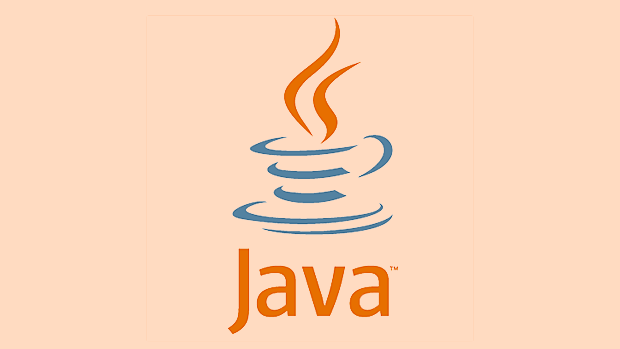高級Java面試問題
高級Java面試問題主要考察JVM內部機制、並發編程、性能調優、設計模式和系統架構的理解。 1. Java內存模型(JMM)定義了線程間內存操作的可見性、原子性和順序性,volatile關鍵字和happens-before規則確保正確同步,避免因CPU緩存導致的更新不可見問題;G1GC適用於大堆和可預測停頓場景,通過分區域回收優先清理垃圾多的區域,而ZGC利用著色指針和加載屏障實現亞毫秒級停頓且停頓時間與堆大小無關,適合低延遲系統。 2. 設計線程安全的LRU緩存可使用ConcurrentHashMap結合ConcurrentLinkedQueue維護訪問順序,但queue.remove為O(n)需優化,生產環境推薦Caffeine;synchronized方法鎖整個對象可能阻塞無關操作,而同步塊可細粒度控制,過度同步降低吞吐量,不足則引發競態條件。 3. 高CPU診斷需通過top/jstack獲取線程棧,定位熱點方法如正則回溯導致的無限循環,使用Async-Profiler等工具分析;減少GC開銷應固定-Xms/-Xmx避免動態擴容,選用ZGC或Shenandoah降低停頓,減少對象創建、使用對像池或直接內存存儲,並通過GC日誌監控優化。 4. Reactive編程適用於I/O密集型高並發場景,基於事件循環以少量線程支撐高並發,支持背壓但調試複雜,不適用於CPU密集任務;微服務彈性保障採用Resilience4j實現熔斷、重試、艙壁隔離、限流,並結合Micrometer和OpenTelemetry提升可觀測性。 5. Java泛型在運行時經歷類型擦除,List

Advanced Java Interview Questions for Senior Developers

When interviewing senior Java developers, the focus shifts from basic syntax and OOP principles to deep understanding of JVM internals, concurrency, performance optimization, design patterns, and system design. Below are some advanced Java interview questions that test real-world expertise and architectural thinking.
1. JVM Internals and Memory Management
Question: Explain the Java Memory Model (JMM) and how it affects concurrent programming.

The Java Memory Model defines how threads interact through memory and establishes guarantees around visibility, atomicity, and ordering of memory operations.
- Main components : Heap (shared among threads), Stack (thread-local), Method Area, PC Registers, Native Method Stack.
- Visibility issues : Without proper synchronization (eg,
volatile,synchronized, orjava.util.concurrentconstructs), one thread may not see updates made by another. - The
volatilekeyword ensures visibility and prevents reordering via memory barriers. - Happens-before relationships are key: actions in one thread that happen-before another ensure proper ordering.
Example: Two threads accessing a shared boolean flag without
volatilemight result in one thread never seeing the update due to CPU caching.
Follow-up: How does garbage collection work in Java? Discuss G1GC vs ZGC.
- G1GC (Garbage-First) : Designed for large heaps with predictable pause times. Divides heap into regions, prioritizes collection of regions with the most garbage ("garbage first").
- ZGC (Z Garbage Collector) : Ultra-low pause times (
- ZGC is pause-time independent of heap size; G1's pauses grow slightly with heap size.
Senior devs should understand trade-offs: ZGC for latency-sensitive systems, G1 for throughput and moderate latency requirements.
2. Concurrency and Multithreading
Question: How would you design a thread-safe cache with eviction policies (eg, LRU)?
Key considerations:
- Use
ConcurrentHashMapfor thread-safe access. - Wrap access to ordering structures with
ReentrantLockor usesynchronizedblocks. - For LRU: combine
LinkedHashMapwithsynchronizedor better, useConcurrentLinkedQueueto track access order.
public class ThreadSafeLRUCache<K, V> {
private final int capacity;
private final Map<K, V> cache = new ConcurrentHashMap<>();
private final ConcurrentLinkedQueue<K> queue = new ConcurrentLinkedQueue<>();
public V get(K key) {
V value = cache.get(key);
if (value != null) {
queue.remove(key); // Not ideal – O(n)
queue.add(key);
}
return value;
}
public void put(K key, V value) {
if (cache.size() >= capacity) {
K oldestKey = queue.poll();
cache.remove(oldestKey);
}
cache.put(key, value);
queue.add(key);
}
}Optimization : Use
ConcurrentSkipListMapor external libraries like Caffeine for production-grade caches.
Follow-up: What are the risks of using synchronized on a method vs. a block?
- Synchronizing on the entire method locks the object (for instance methods), potentially blocking unrelated operations.
- Block-level synchronization allows finer control, eg, lock only the critical section.
- Risk: over-synchronization reduces throughput; under-synchronization causes race conditions.
3. Performance Tuning and Diagnostics
Question: How do you diagnose and resolve high CPU usage in a Java application?
Steps:
- Monitor : Use
top,htop, orjtopto identify high CPU process. - Thread dump : Use
jstack <pid>orkill -3 <pid>to get stack traces. - Convert PID to hexadecimal thread ID for the offending thread.
- Analyze which method is consuming CPU (eg, infinite loop, tight regex, inefficient algorithm).
- Use profiling tools: Async-Profiler , JVisualVM , YourKit , or JFR (Java Flight Recorder) .
Example: A regex like
"(.*?)*@"can cause catastrophic backtracking → high CPU.
Follow-up: How do you reduce GC overhead in a high-throughput service?
- Tune heap size:
-Xmsand-Xmxset to same value to avoid expansion pauses. - Choose appropriate GC: ZGC or Shenandoah for low latency; G1 for balanced workloads.
- Minimize object creation: object pooling, primitive wrappers, string interning.
- Use off-heap storage for large datasets (eg, via
ByteBuffer.allocateDirector frameworks like Chronicle). - Monitor GC logs: Enable
-Xlog:gc*:file=gc.logand analyze with tools like GCViewer.
4. Design Patterns and System Architecture
Question: When would you use the Reactive Programming model (eg, Project Reactor) over traditional threading?
Reactive programming (eg, Flux , Mono ) is ideal when:
- You have I/O-bound operations (eg, DB calls, HTTP requests).
- Need high concurrency with limited threads (eg, Netty-based servers like WebFlux).
- Want non-blocking backpressure support.
Traditional threading (Tomcat Servlet) scales linearly with threads → high memory use.
Reactive model scales with event loops → efficient resource usage.
But: reactive code is harder to debug, test, and reason about. Not always worth it for CPU-bound tasks.
Follow-up: How do you ensure resilience in microservices using Java?
Use patterns and libraries:
- Circuit Breaker : Resilience4j or Hystrix (deprecated) to fail fast.
- Retry Mechanisms : With exponential backoff.
- Bulkheads : Limit concurrency per service.
- Rate Limiting & Throttling : Prevent overload.
- Integrate with observability: logging, metrics (Micrometer), tracing (OpenTelemetry).
5. Advanced Language Features
Question: Explain how Java generics work at runtime and what is type erasure.
- Generics are compile-time only; type information is erased during compilation.
- At runtime,
List<String>andList<Integer>are bothList. - Implications :
- Cannot instantiate generic types:
new T()is invalid. - Cannot check
instanceof List<String>. - Bridge methods are generated to maintain polymorphism.
- Cannot instantiate generic types:
- Workarounds: Pass
Class<T>or useTypeToken(Google Gson).
Follow-up: What are sealed classes and pattern matching in modern Java?
- Sealed classes (Java 17 ): Restrict which classes can extend/implement a class/interface.
public sealed interface Shape permits Circle, Rectangle, Triangle {}- Pattern matching (Java 16
instanceof, Java 21switch):
if (shape instanceof Circle c) {
return c.radius();
} else if (shape instanceof Rectangle r) {
return r.width() * r.height();
}These features enable algebraic data types and reduce boilerplate, improving code safety and readability.
Final Thoughts
Senior Java roles require more than coding skill — they demand deep understanding of:
- JVM behavior under load
- Trade-offs in concurrency models
- System design at scale
- Modern Java features and best practices
These questions probe not just knowledge, but judgment. A strong candidate doesn't just know what to do — they explain why , and when not to do it.
Basically, it's not about memorizing answers — it's about showing you've wrestled with real systems and learned from them.
以上是高級Java面試問題的詳細內容。更多資訊請關注PHP中文網其他相關文章!

熱AI工具

Undress AI Tool
免費脫衣圖片

Undresser.AI Undress
人工智慧驅動的應用程序,用於創建逼真的裸體照片

AI Clothes Remover
用於從照片中去除衣服的線上人工智慧工具。

Clothoff.io
AI脫衣器

Video Face Swap
使用我們完全免費的人工智慧換臉工具,輕鬆在任何影片中換臉!

熱門文章

熱工具

記事本++7.3.1
好用且免費的程式碼編輯器

SublimeText3漢化版
中文版,非常好用

禪工作室 13.0.1
強大的PHP整合開發環境

Dreamweaver CS6
視覺化網頁開發工具

SublimeText3 Mac版
神級程式碼編輯軟體(SublimeText3)
 Edge PDF查看器不起作用
Aug 07, 2025 pm 04:36 PM
Edge PDF查看器不起作用
Aug 07, 2025 pm 04:36 PM
testthepdfinanotherapptoderineiftheissueiswiththefileoredge.2.enablethebuilt inpdfviewerbyTurningOff“ eflblyopenpenpenpenpenpdffilesexternally”和“ downloadpdffiles” inedgesettings.3.clearbrowsingdatainclorwearbrowsingdataincludingcookiesandcachedcachedfileresteroresoreloresorelorsolesoresolesoresolvereresoreorsolvereresoreolversorelesoresolvererverenn
 用Docker將Java應用程序部署到Kubernetes
Aug 08, 2025 pm 02:45 PM
用Docker將Java應用程序部署到Kubernetes
Aug 08, 2025 pm 02:45 PM
容器化Java應用:創建Dockerfile,使用基礎鏡像如eclipse-temurin:17-jre-alpine,複製JAR文件並定義啟動命令,通過dockerbuild構建鏡像並用dockerrun測試本地運行。 2.推送鏡像到容器註冊表:使用dockertag標記鏡像並推送到DockerHub等註冊表,需先登錄dockerlogin。 3.部署到Kubernetes:編寫deployment.yaml定義Deployment,設置副本數、容器鏡像和資源限制,編寫service.yaml創建
 如何在Java中實現簡單的TCP客戶端?
Aug 08, 2025 pm 03:56 PM
如何在Java中實現簡單的TCP客戶端?
Aug 08, 2025 pm 03:56 PM
Importjava.ioandjava.net.SocketforI/Oandsocketcommunication.2.CreateaSocketobjecttoconnecttotheserverusinghostnameandport.3.UsePrintWritertosenddataviaoutputstreamandBufferedReadertoreadserverresponsesfrominputstream.4.Usetry-with-resourcestoautomati
 VS代碼快捷方式專注於Explorer面板
Aug 08, 2025 am 04:00 AM
VS代碼快捷方式專注於Explorer面板
Aug 08, 2025 am 04:00 AM
VSCode中可通過快捷鍵快速切換面板與編輯區。要跳轉至左側資源管理器面板,使用Ctrl Shift E(Windows/Linux)或Cmd Shift E(Mac);返回編輯區可用Ctrl `或Esc或Ctrl 1~9。相比鼠標操作,鍵盤快捷鍵更高效且不打斷編碼節奏。其他技巧包括:Ctrl KCtrl E聚焦搜索框,F2重命名文件,Delete刪除文件,Enter打開文件,方向鍵展開/收起文件夾。
 如何使用Mockito在Java中嘲笑?
Aug 07, 2025 am 06:32 AM
如何使用Mockito在Java中嘲笑?
Aug 07, 2025 am 06:32 AM
要有效使用Mockito進行Java單元測試,首先需添加Mockito依賴,Maven項目在pom.xml中加入mockito-core依賴,Gradle項目添加testImplementation'org.mockito:mockito-core:5.7.0';接著通過@Mock註解(配合@ExtendWith(MockitoExtension.class))或mock()方法創建模擬對象;然後使用when(...).thenReturn(...)等方式對模擬對象的方法行為進行存根,也可配置異
 修復:Windows Update無法安裝
Aug 08, 2025 pm 04:16 PM
修復:Windows Update無法安裝
Aug 08, 2025 pm 04:16 PM
runthewindowsupdatetrubloubleshooterviaSettings>更新&安全> is esseShootsoAtomationfixCommonissues.2.ResetWindowSupDateComponentsByStoppingRealatedServices,RenamingTheSoftWaredWaredWaredSoftwaredSistribution andCatroot2Folders,intrestrestartingthertingthertingtherserviceSteStoceTocle
 Java對象的序列化過程是什麼?
Aug 08, 2025 pm 04:03 PM
Java對象的序列化過程是什麼?
Aug 08, 2025 pm 04:03 PM
JavaserializationConvertSanObject'SstateIntoAbyTeSteAmForStorageorTransermission,andDeserializationReconstructstheObjectStheObjectFromThstream.1.toenableserialization,aclassMustimustimplementTheSerializableizableface.2.UseObjectObjectObjectObjectOutputputputputputtreamToserialializeanobectizeanobectementeabectenobexpent,savin
 如何在Java中使用一個時循環
Aug 08, 2025 pm 04:04 PM
如何在Java中使用一個時循環
Aug 08, 2025 pm 04:04 PM
AwhileloopinJavarepeatedlyexecutescodeaslongastheconditionistrue;2.Initializeacontrolvariablebeforetheloop;3.Definetheloopconditionusingabooleanexpression;4.Updatethecontrolvariableinsidethelooptopreventinfinitelooping;5.Useexampleslikeprintingnumber








